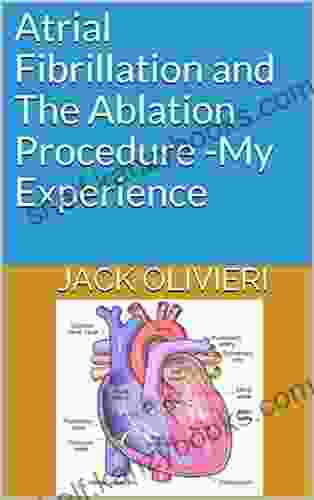The Birth and Foundation of the Second Scientific Revolution: History of Science

The scientific revolution was a period of great intellectual and cultural change that began in the 16th century and continued through the 18th century. It was a time of groundbreaking scientific discoveries that transformed our understanding of the natural world.
5 out of 5
| Language | : | English |
| File size | : | 2482 KB |
| Text-to-Speech | : | Enabled |
| Screen Reader | : | Supported |
| Enhanced typesetting | : | Enabled |
| Print length | : | 146 pages |
| Lending | : | Enabled |
The first scientific revolution, which took place in the 16th and 17th centuries, was characterized by the development of the scientific method. This method emphasized the importance of observation, experimentation, and mathematical reasoning. Scientists such as Copernicus, Galileo, and Kepler used the scientific method to make groundbreaking discoveries about the universe.
The second scientific revolution, which began in the 18th century, was characterized by the development of new scientific instruments and techniques. These instruments and techniques allowed scientists to make even more precise observations and experiments. Scientists such as Newton, Laplace, and Lavoisier used these new tools to make groundbreaking discoveries in physics, chemistry, and other fields.
The second scientific revolution had a profound impact on Western culture. It led to the development of new technologies that improved our lives. It also led to new ways of thinking about the natural world and our place in it.
The Origins of the Second Scientific Revolution
The second scientific revolution was the result of a number of factors, including:
- The rise of new scientific instruments and techniques
- The development of new mathematical methods
- The rise of new scientific institutions
- The increasing availability of scientific knowledge
The rise of new scientific instruments and techniques was one of the most important factors in the second scientific revolution. These instruments and techniques allowed scientists to make more precise observations and experiments. For example, the telescope allowed astronomers to observe the stars and planets in much greater detail. The microscope allowed biologists to observe microorganisms for the first time.
The development of new mathematical methods was also important in the second scientific revolution. These methods allowed scientists to analyze and interpret their data more effectively. For example, calculus allowed Isaac Newton to develop his theory of gravity.
The rise of new scientific institutions was also important in the second scientific revolution. These institutions provided scientists with a place to share their ideas and to collaborate on research projects. For example, the Royal Society of London was founded in 1660 to promote the study of science.
The increasing availability of scientific knowledge was also important in the second scientific revolution. This knowledge was disseminated through books, journals, and lectures. The increasing availability of scientific knowledge allowed more and more people to learn about science.
The Major Figures of the Second Scientific Revolution
The second scientific revolution was led by a number of brilliant scientists, including:
- Isaac Newton
- Pierre-Simon Laplace
- Antoine Lavoisier
- Carl Linnaeus
- James Clerk Maxwell
Isaac Newton was one of the most important scientists in history. He developed the laws of motion and the law of universal gravitation. These laws laid the foundation for classical mechanics. Newton also developed calculus, which is a branch of mathematics that is used to analyze change.
Pierre-Simon Laplace was a French mathematician and astronomer. He developed the Laplacian differential operator, which is a mathematical tool that is used to solve a wide variety of problems in physics and engineering. Laplace also developed the nebular hypothesis, which is a theory about the formation of the solar system.
Antoine Lavoisier was a French chemist who is considered to be the father of modern chemistry. He developed the law of conservation of mass and the law of definite proportions. These laws laid the foundation for modern chemistry.
Carl Linnaeus was a Swedish botanist and zoologist who developed the Linnaean system of taxonomy. This system is used to classify plants and animals. Linnaeus also developed the binomial nomenclature system, which is used to give each species a unique two-part name.
James Clerk Maxwell was a Scottish physicist and mathematician who developed the classical theory of electromagnetism. This theory laid the foundation for modern telecommunications.
The Impact of the Second Scientific Revolution
The second scientific revolution had a profound impact on Western culture. It led to the development of new technologies that improved our lives. It also led to new ways of thinking about the natural world and our place in it.
Some of the most important technologies that were developed during the second scientific revolution include:
- The telescope
- The microscope
- The steam engine
- The electric motor
- The computer
These technologies have revolutionized our lives. They have made it possible for us to travel faster, communicate more easily, and live longer.
The second scientific revolution also led to new ways of thinking about the natural world and our place in it. The scientific method led scientists to develop new theories about the universe. These theories challenged traditional beliefs and led to a new understanding of our place in the cosmos.
The second scientific revolution was a time of great intellectual and cultural change. It led to the development of new technologies that improved our lives. It also led to new ways of thinking about the natural world and our place in it.
The second scientific revolution was a major turning point in human history. It led to the development of new technologies that improved our lives. It also led to new ways of thinking about the natural world and our place in it.
The second scientific revolution is still ongoing. Scientists are continuing to make new discoveries and develop new technologies. We can only imagine what the future holds for science and technology.
5 out of 5
| Language | : | English |
| File size | : | 2482 KB |
| Text-to-Speech | : | Enabled |
| Screen Reader | : | Supported |
| Enhanced typesetting | : | Enabled |
| Print length | : | 146 pages |
| Lending | : | Enabled |
Do you want to contribute by writing guest posts on this blog?
Please contact us and send us a resume of previous articles that you have written.
 Book
Book Novel
Novel Page
Page Chapter
Chapter Text
Text Story
Story Genre
Genre Reader
Reader Library
Library Paperback
Paperback E-book
E-book Magazine
Magazine Newspaper
Newspaper Paragraph
Paragraph Sentence
Sentence Bookmark
Bookmark Shelf
Shelf Glossary
Glossary Bibliography
Bibliography Foreword
Foreword Preface
Preface Synopsis
Synopsis Annotation
Annotation Footnote
Footnote Manuscript
Manuscript Scroll
Scroll Codex
Codex Tome
Tome Bestseller
Bestseller Classics
Classics Library card
Library card Narrative
Narrative Biography
Biography Autobiography
Autobiography Memoir
Memoir Reference
Reference Encyclopedia
Encyclopedia James Birchenough
James Birchenough Jane Coxwell
Jane Coxwell James A Brannan
James A Brannan Jamil Zaghdoudi
Jamil Zaghdoudi Joanna Alderson
Joanna Alderson Janet Zand
Janet Zand Thea Garofalo
Thea Garofalo S J Cook
S J Cook Lauryn Chun
Lauryn Chun James Greenblatt
James Greenblatt James Frey
James Frey James Gariti M D
James Gariti M D Robert Blaich
Robert Blaich James Banks
James Banks Yasmine Galenorn
Yasmine Galenorn Janet Geringer Woititz
Janet Geringer Woititz Rev Jennifer Mcsween
Rev Jennifer Mcsween Libby Cataldi
Libby Cataldi Tamara Prosper
Tamara Prosper Jason Begy
Jason Begy
Light bulbAdvertise smarter! Our strategic ad space ensures maximum exposure. Reserve your spot today!

 Jorge Luis BorgesNavigating Atrial Fibrillation: A Comprehensive Guide to the Ablation...
Jorge Luis BorgesNavigating Atrial Fibrillation: A Comprehensive Guide to the Ablation... Haruki MurakamiFollow ·13.4k
Haruki MurakamiFollow ·13.4k Forrest ReedFollow ·8.7k
Forrest ReedFollow ·8.7k Anton FosterFollow ·5.4k
Anton FosterFollow ·5.4k Brennan BlairFollow ·6.8k
Brennan BlairFollow ·6.8k Brandon CoxFollow ·18.4k
Brandon CoxFollow ·18.4k Rudyard KiplingFollow ·9.9k
Rudyard KiplingFollow ·9.9k Mitch FosterFollow ·2.8k
Mitch FosterFollow ·2.8k Aaron BrooksFollow ·10.5k
Aaron BrooksFollow ·10.5k

 Jacques Bell
Jacques BellUnlock the Power of SEO: The Ultimate Almanac of Free...
In today's highly...

 Robert Heinlein
Robert HeinleinUnlock Effortless Weight Loss with the Keto Meal Prep...
Are you ready to embark on a life-changing...

 Langston Hughes
Langston HughesDelicious Recipes to Spice Up Your Next Meal
A Culinary Adventure Awaits Are you ready...

 Eugene Powell
Eugene PowellSafely Choose The Right Regenerative Treatment For You: A...
Regenerative medicine, a rapidly...
5 out of 5
| Language | : | English |
| File size | : | 2482 KB |
| Text-to-Speech | : | Enabled |
| Screen Reader | : | Supported |
| Enhanced typesetting | : | Enabled |
| Print length | : | 146 pages |
| Lending | : | Enabled |














